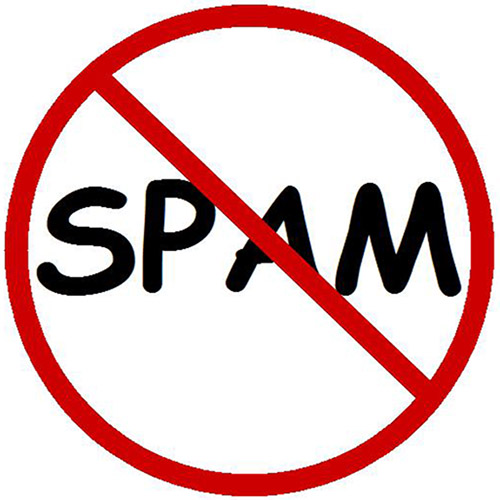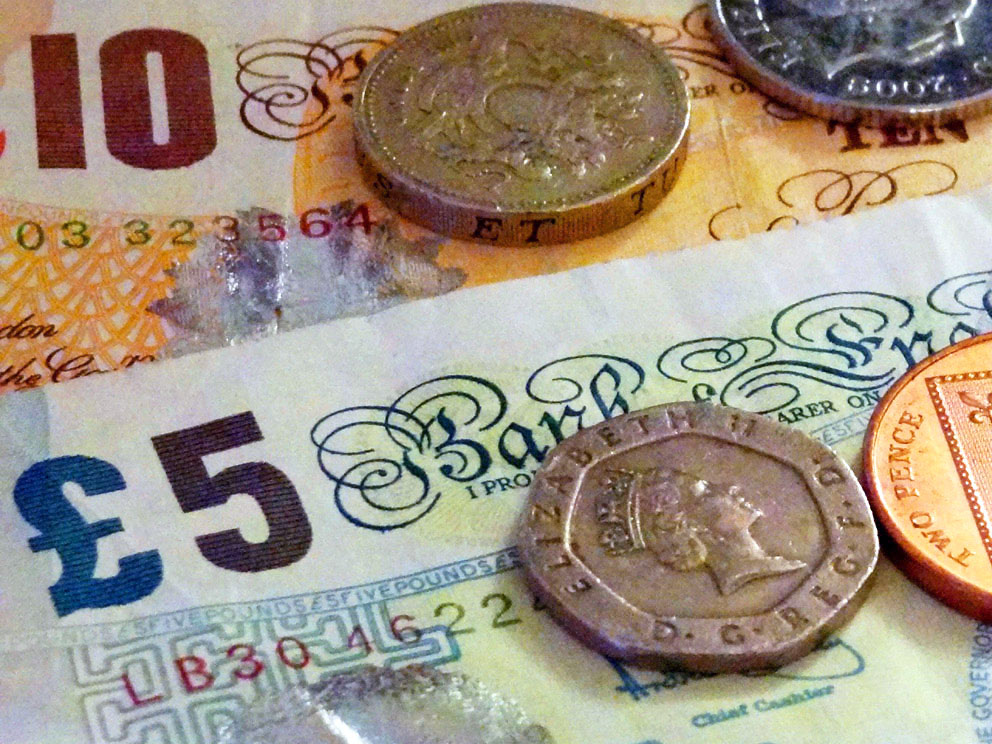 Most real-world markets are a long way from the perfect information setting assumed in perfectly competitive markets. Many industries therefore rely heavily on word of mouth to increase demand. This is especially true in the digital age where information can spread extremely rapidly and many websites encourage consumer ratings and reviews. Here, information becomes more and more valuable as it is shared with other people.
Most real-world markets are a long way from the perfect information setting assumed in perfectly competitive markets. Many industries therefore rely heavily on word of mouth to increase demand. This is especially true in the digital age where information can spread extremely rapidly and many websites encourage consumer ratings and reviews. Here, information becomes more and more valuable as it is shared with other people.
However, the economist Joshua Gans has suggested that traditional business models are not well suited to fully exploiting the benefits of the sharing of information. This is because, whilst enthusiastic consumers spread the word, the seller has traditionally acted as a gate-keeper, maintaining complete control over who obtains the product. The problem is that this creates a friction which can dampen momentum for the product from building.
In contrast, Gans describes a novel alternative strategy that was used by the band the XX when they released their second album earlier this year. As is becoming more and more common, the band premiered the album as an online stream. However, what was unique about the XX’s approach was that they gave the stream to a single superfan. They hoped that this chosen fan would initiate the spreading of the stream amongst other fans. After a worrying delay in which he enjoyed his monopoly ownership, this is what he eventually did. Just 24 hours later the stream had been player millions of times and the site crashed under the burden.
Of course, one reason why suppliers may need close control is to be able to charge for the product. If the sharing information must involve giving something away for free, it typically makes no commercial sense. However, Gans also points out that recommendations are more credible if the information has been costly to obtain. Otherwise, it may simply be cheap talk and therefore carry little value.
The balancing act for suppliers is therefore to introduce a hurdle cost in obtaining the information whilst trying to ensure that, once it has been passed on, the recipient encounters as little friction as possible in making use of it. Gans suggests that alternative business models can be developed which achieve this balance. If these can profitably encourage the sharing of information a win-win situation for sellers and buyers is created.
Furthermore, Gans is experimenting with selling his new book about sharing information under an example of one such model. Having bought the e-book for $4.99 you will find a coupon at the back which you can pass on to a friend or family member which allows them to buy their own copy of the book for a mere $0.99. However, as he points out, there is a potential danger to this strategy:
“All my readers could form a collective and potentially buy one copy for $4.99 and then a million for $0.99.”
He has said that he plans to be report back on how the book has sold on his blog at a later date, so it will be interesting to see whether or not the experiment was successful.
The folly of replicating the physical world HBR Blog Network, Joshua Gans (17/11/10)
A shared pricing experiment for my book Digitopoly, Joshua Gans (05/10/12)
Information wants to be…..shared O’Reilly Tools of Change for Publishing, Joe Wikert (16/10/12)
Questions
- Why will the problems described above not arise in the model of perfect competition?
- What type of industries are most likely to rely on word of mouth?
- In what type of industries is the friction described above most likely to happen?
- Describe the dangers with the strategy Gans is adopting for selling his book?
- Explain whether you think these dangers are likely to arise in practice.
- How might the business model be modified to avoid these dangers?
 A modern day hindrance is spam email clogging up your inbox with, for example, offers for cheap drugs or notifications that you will inherit enough money to retire to the Bahamas. A recent paper by Justin Rao and David Reiley in the Journal of Economic Perspectives investigates the economics of spam mail (which, as I discovered, from the article gets it’s name from a Monty Python sketch). Remarkably, they quote figures suggesting that 88% of worldwide email traffic is spam. Their paper then provides a number of interesting insights into the business of spam mail.
A modern day hindrance is spam email clogging up your inbox with, for example, offers for cheap drugs or notifications that you will inherit enough money to retire to the Bahamas. A recent paper by Justin Rao and David Reiley in the Journal of Economic Perspectives investigates the economics of spam mail (which, as I discovered, from the article gets it’s name from a Monty Python sketch). Remarkably, they quote figures suggesting that 88% of worldwide email traffic is spam. Their paper then provides a number of interesting insights into the business of spam mail.
First, given that most recipients simply delete it, why is spam mail sent out? For the benefits of sending it to exceed the costs, it must be that somebody is reading and responding to it and the costs must also be reasonably low. Rao and Reiley are able to quantify these costs and benefits. They estimate that if 8.3 million spam emails are sent, only 1.8% (approximately 150,000) will reach the intended recipients’ inboxes, with the remainder being blocked or filtered out. Of these 150,000, just 0.25% (375) are clicked on. Furthermore, these 375 clicks generate just a single sale of the advertised product which is typically sold for around $50. Assuming that free entry of spammers leads to them earning zero economic profit, this means that it costs the spammers around $50 to send the 8.3 million emails.
Second, spam mail clearly imposes a considerable negative externality on society. This includes wasted time for consumers and the costs of the extra server hardware capacity required. Rao and Reiley are also able to quantify the size of the negative externality created. First, they estimate that:
“American firms and consumers experience costs of almost $20 billion annually due to spam.”
This can then be compared to the benefits senders of spam get:
“….. we estimate that spammers and spam-advertised merchants collect gross worldwide revenues on the order of $200 million per year. Thus, the ‘externality ratio’ of external costs to internal benefits for spam is around 100:1.”
They then compare this to estimates for other negative externalities such as car pollution and conclude that the size of the negative externality from spam is significantly greater.
Finally, they also point out that it is predominantly the larger email service providers i.e. Yahoo! Mail, Microsoft Hotmail, and Google Gmail who have both the incentives and resources to fund interventions to eradicate spam. For example, in 2009 Microsoft and Pfizer (the manufacturer of Viagra which faces competition from counterfeit versions often advertised by spam) financially supported the successful operation to shut down the largest spam distributor. Clearly, such operations have large positive spillovers for email users. However, as they also discuss, anti-spam technology also increases the fixed costs of competing as an email provider and they suggest that this has contributed to the increased concentration in the market.
The unpalatable business of spam The undercover economist, Tim Harford (19/07/12)
Huge spam botnet Grum is taken out by security researchers BBC News (19/07/12)
Spammers make a combined $200 million a year while costing society $20 billion BGR, Dan Graziano (28/08/12)
Questions
- Explain why free entry results in zero economic profit.
- Explain how an increase in fixed costs can lead to an increase in concentration.
- Why does Microsoft have large incentives to eradicate spam mail?
- In what ways does the externality created by spam mail differ from other forms of advertising?
- How might government policies alter the costs and benefits of sending spam mail?
 Last year, an academic discovered that the only two firms on Amazon selling new copies of a classic biology textbook were charging well over $1 million (plus $3.99 for shipping!). Furthermore, when he checked the next day, prices had risen even further to nearly $2.8 million! Intrigued by this strange pricing behaviour, he started to investigate the prices further.
Last year, an academic discovered that the only two firms on Amazon selling new copies of a classic biology textbook were charging well over $1 million (plus $3.99 for shipping!). Furthermore, when he checked the next day, prices had risen even further to nearly $2.8 million! Intrigued by this strange pricing behaviour, he started to investigate the prices further.
In oligopoly markets with a small number of players, firms must make strategic decisions taking into account how they expect their rivals will react. One option in today’s online market places is for firms to use computer algorithms which automatically adjust their prices according to the prices their rivals are charging. The results of his investigation suggested that this was exactly what was causing the prices for this textbook to be so high.
One of the firms appeared to adopt a pricing rule which set its price at 0.9983 times the price of the other firm. This seems to make sense – this firm wants to undercut its rival in order to be more likely to sell its copy. However, if both firms operated under this strategy, we would expect to see prices falling over time (see also). In contrast, the strategy of the other firm appeared to be to price 1.270589 above its rival’s price. Why would it want to try to make sure it was always more expensive that its rival? The academic’s plausible explanation was that:
“…they do not actually possess the book. Rather, they noticed that someone else listed a copy for sale, and so they put it up as well – relying on their better feedback record to attract buyers. But, of course, if someone actually orders the book, they have to get it – so they have to set their price significantly higher – say 1.27059 times higher – than the price they’d have to pay to get the book elsewhere.”
Put both of these pricing rules together and prices will continuously rise over time! This was exactly what the academic observed for over a week, until human intervention appears to have returned prices to a more sensible level.
As Tim Harford discusses in his recent blog post, it had been hoped that online market places would result in very low prices because the high degree of price transparency increases competition. Clearly the prices Amazon was initially charging for the textbook didn’t support this theory and even after human intervention prices would seem to be well above marginal production costs. However, as the blog post goes on to explain, we should not necessarily expect price transparency always to lead to low prices. Economic theory shows us that in oligopoly markets, when a small number of players interact repeatedly, they may be able to collude tacitly on high prices. Furthermore, a high degree of price transparency may help such collusive behaviour because it makes it easier for firms to detect cheating by a rival.
Amazon’s $23,698,655.93 Book About Flies (SCREENSHOT) The Huffington Post, Steven Hoffer (26/04/11)
Questions
- What are the key features of competition between book sellers on Amazon?
- What price setting rule would the two firms have to use for prices to continuously fall over time? Provide an illustrative example.
- What are the pros and cons for a firm of relying on a computer algorithm to set its prices?
- How might a firm program its price setting algorithm if it wanted to collude tacitly with its rivals?
- Can you think of any other explanations for the pricing strategies that the two Amazon sellers adopted?
 The 2012 London Olympics opened on 27 July. This has been the result of years of planning and investment in infrastructure since London won the bid in 2005.
The 2012 London Olympics opened on 27 July. This has been the result of years of planning and investment in infrastructure since London won the bid in 2005.
It is estimated that hosting the Games will have cost over £9bn. It is therefore interesting to consider the long-run impact on a host city years after the last medal has been won. We might expect host cities to achieve increased growth due to the benefits from the improved infrastructure and the impact of increased publicity and exposure on trade, capital and population.
 This has recently been investigated in a paper published in the Economic Inquiry by Stephen Billings and James Holladay which looks at the impact hosting the Games has on GDP and trade (working paper available here). One difficulty with trying to identify the impact of hosting the Games, is that only certain cities will have a chance of being chosen as hosts and these may be cities that are more likely to experience future growth. If this is the case, it would appear that the future growth was due to hosting the Games when it would in fact have been likely to occur anyway. In order to control for this, the above paper compares the winners with losing finalists in the selection process for host cities. For example under this approach London would be compared with Singapore, Moscow, New York and Madrid. In addition, subsequent matching processes are also used to select appropriate cities for comparison.
This has recently been investigated in a paper published in the Economic Inquiry by Stephen Billings and James Holladay which looks at the impact hosting the Games has on GDP and trade (working paper available here). One difficulty with trying to identify the impact of hosting the Games, is that only certain cities will have a chance of being chosen as hosts and these may be cities that are more likely to experience future growth. If this is the case, it would appear that the future growth was due to hosting the Games when it would in fact have been likely to occur anyway. In order to control for this, the above paper compares the winners with losing finalists in the selection process for host cities. For example under this approach London would be compared with Singapore, Moscow, New York and Madrid. In addition, subsequent matching processes are also used to select appropriate cities for comparison.
 They find that larger cities in wealthier countries are more likely to be chosen to host the Games. However, once comparisons with other appropriate cities are made, overall, they find that hosting the Games has no effect on a cities population, growth or trade. One explanation provided is that the intense competition to host the Games means the potential gains are competed away via escalated promises in order to increase a cities chances of being selected. In addition, they note that there may well still be considerable specific benefits from the investments made to host the Games.
They find that larger cities in wealthier countries are more likely to be chosen to host the Games. However, once comparisons with other appropriate cities are made, overall, they find that hosting the Games has no effect on a cities population, growth or trade. One explanation provided is that the intense competition to host the Games means the potential gains are competed away via escalated promises in order to increase a cities chances of being selected. In addition, they note that there may well still be considerable specific benefits from the investments made to host the Games.
It is also clear that there are both positive and negative externalities from hosting the Games that, whilst difficult to measure, ideally should be taken into account. On the negative side, these include the extra hassle anybody travelling to work in London during the Games will face. On the other hand, on the positive side, it is hoped that part of the long-run legacy of the Games will be increased interest and participation in sport which would result in substantial health benefits.
David Cameron claims London 2012 will bring £13bn ‘gold for Britain’ The Guardian, Hélène Mulholland (05/07/12)
Olympic legacy: how the six Olympic boroughs compare for children The Guardian, Simon Rodgers (19/07/12)
London 2012: Olympics legacy hard to define BBC News, David Bond (13/07/12)
Questions
- Explain how intense competition to host the Games might result in benefits being competed away.
- Can you think of any other externalities resulting from the Olympic Games?
- Why are the impact of externalities difficult to measure?
- What other factors should be taken into account when assessing the costs and benefits of hosting the Games?
- Do you think the decision to bid to host the Games should be purely based on a cost-benefit analysis?
 A recent article on this blog discussed the likelihood that we will soon move to a cashless society. It is therefore interesting to consider the implications that this might have for consumer behaviour. We might expect the form of payment to make no difference to a rational consumer. However, there is considerable evidence to suggest that this is not the case.
A recent article on this blog discussed the likelihood that we will soon move to a cashless society. It is therefore interesting to consider the implications that this might have for consumer behaviour. We might expect the form of payment to make no difference to a rational consumer. However, there is considerable evidence to suggest that this is not the case.
One reason why people appear to spend more freely on credit cards is payment decoupling – you get utility from the item purchased before you pay the cost. However, more recent evidence suggests that this is not the only relevant factor. It appears that the degree of transparency of the payment method also has an effect. Psychologists quoted in the above article conclude from their experimental evidence that:
Payment modes differ in the transparency with which individuals can feel the outflow of money. ….with cash being the most transparent payment mode.
This effect also appears to make people spend cash less freely.
 The author of the above article spent some time experimenting with trying to make all his purchases using cash. He found that by doing so, he was able to reduce his spending by about 10%. However, this seems likely to become harder to do in the future and, as the article concludes, it is already difficult to purchase some items with cash.
The author of the above article spent some time experimenting with trying to make all his purchases using cash. He found that by doing so, he was able to reduce his spending by about 10%. However, this seems likely to become harder to do in the future and, as the article concludes, it is already difficult to purchase some items with cash.
Article
Why does foreign money seem like play money? Science Codex (04/06/07)
Questions
- What type of products is it already difficult to purchase with cash?
- How did the psychologists test the transparency of payment methods?
- Do you think the consumer behaviour described above is likely to persist in the long-run?
- Might firms be able to take advantage of the consumers behave described above?
- Do you think the transparency of foreign currencies is the main reason why people spend more when they are abroad?
 Most real-world markets are a long way from the perfect information setting assumed in perfectly competitive markets. Many industries therefore rely heavily on word of mouth to increase demand. This is especially true in the digital age where information can spread extremely rapidly and many websites encourage consumer ratings and reviews. Here, information becomes more and more valuable as it is shared with other people.
Most real-world markets are a long way from the perfect information setting assumed in perfectly competitive markets. Many industries therefore rely heavily on word of mouth to increase demand. This is especially true in the digital age where information can spread extremely rapidly and many websites encourage consumer ratings and reviews. Here, information becomes more and more valuable as it is shared with other people.





